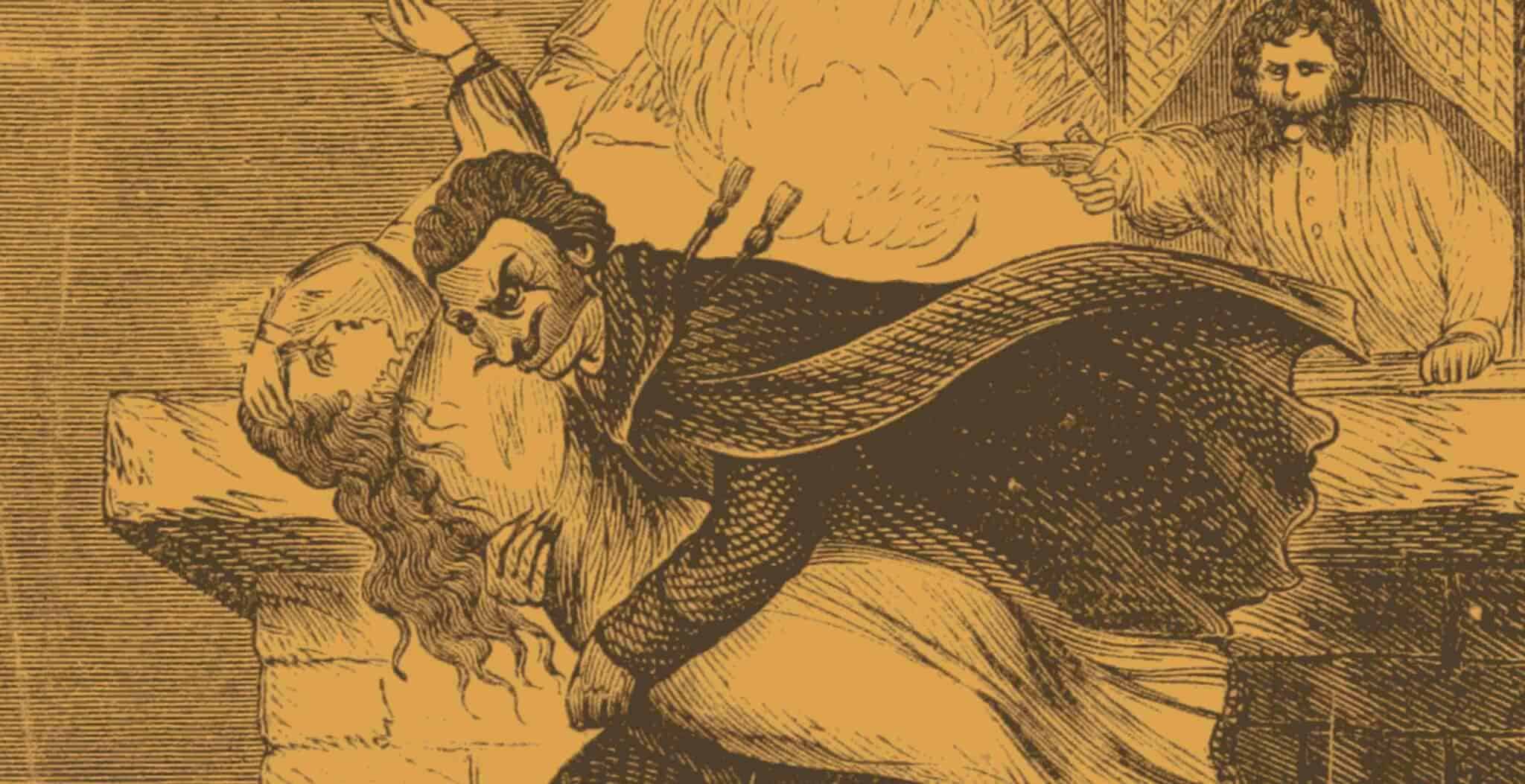
For around two decades, I lived in London’s central Clerkenwell area, a place with a rich history of ghosts, supernatural phenomena and other strange occurrences. And, as we near the Yuletide season, there are literary associations with Charles Dickens, the ghosts of whose characters sometimes seem to permeate the streets and alleyways. Barely 10 minutes away was Charles Dickens’ actual house in Doughty Street, whilst 2 minutes stroll took me to Clerkenwell Green, where Fagin and the Artful Dodger taught Oliver pickpocketing; nearby Hockley-by-the-Hole was notorious gathering point for petty criminals; a short trot took me to Fagin’s lair at the southern end of Saffron Hill.
A longer perambulation would see me at Scrooge’s counting house in Newman's Court, off Cornhill in the City of London; still further across the Thames I would venture to what used be Jacob’s Island, disease-ridden slum and home to the evil Bill Sikes.
But enough of these fictional specters; here are four ‘real’ ones, all with a special Seasonal relevance.
The Buckingham Palace Monk

Legend has it there was once a monastery on the site of the present palace and and a monk was confined in a cell as punishment for some unnamed crime where he starved to death; presumably something very naughty on the list of sins. If you’re in the area on Christmas Day you may catch sight of his shade at the the rear of the palace which overlooks the Royal Family’s sprawling private gardens. There is a terrace along this side and it is here that the chained, moaning spirit stumbles his way until he reaches the end of the promenade and fades away, only to return the next Christmas Day.
Not exactly a fun afterlife then.
The “Nameless Thing” of 50 Berkeley Square

Grade II listed 50 Berkeley Square was built in the 1750s and is located in Mayfair, London; a pretty enough building, unassuming and constructed in the same style as it's neighbors. But something truly terrible lurks behind its well-heeled exterior, something worthy of a novel by H.P. Lovecraft.
There are other tales to tell of the building (see Further Reading) but the following has particular resonance for the Holiday Season. To paraphrase Rod Serling's iconic introduction to The Twilight Zone, "Submitted for your approval, the story of the Two Sailors”
Christmas Eve 1887: two drunken sailors on shore leave sought shelter in the then shuttered, uninhabited building, unaware of 50 Berkeley Square's thoroughly evil reputation .
The ground floor rooms being damp, the pair chose a room on the second floor. After an hour or so of fitful, inebriate slumber, they were woken by the sound of thudding, purposeful footsteps coming up the stairs accompanied by a vile stench. The door to the sailor’s room was suddenly flung open to reveal in the doorway, “a shapeless, slithering, horrible mass”. One fellow managed to wrest his way past the thing and ran for help, but the other was trapped. When the sailor returned with a policeman, they soon found the body of his companion, impaled on the railings outside the house, his face a rictus of terror. He had either tried to escape the apparition by climbing outside and had accidentally fallen to his death; or deliberately jumped, and failed to avoid the railings.
Or he had been flung to his death by the monstrous sludgy being, which appears to be a cousin of the disgusting ‘Guardian’ in M.R. James’ The Treasure of Abbot Thomas (1904). A damp, heavy, slimy, leathery creature, with a moldy smell, cold ‘face’ and and clinging limbs.
The Red-Scarfed Woman at Ickenham Tube Station

A disturbing tale is the haunting of Ickenham Tube station, where a female spirit visits every festive period.
The apparition first appeared in the 1950s, and has been spotted every Christmas since then. She’s said to be the shade of a woman who slipped onto the track and was electrocuted. Wearing a bright red scarf, she appears at the end of the platform, close to where she fell, waving frantically at people on the platform to attract their attention, then vanishing into the gloom. Is this the tortured soul of the poor woman desperately trying to save herself time and time again, hoping she can get home to celebrate Christmas with her family?
Or maybe the ghost of a suicide, nursing eternal regrets?
From Charles Dickens’ The Signal-Man (1866):
Ghosts on the Underground
All Hallows by the Tower: the phantom crone and her feline companion

December 1920: 6pm - a choirmaster and two young choirboys (no, not the beginning of a risqué joke) are in the ancient church, to rehearsing few days before Christmas. They had been singing for around twenty minutes when they saw a little old lady standing close by. One of the lads placed a chair for her to sit on, the woman nodding her thanks and promptly parking her rear end. She was dressed, so the choirmaster later recalled, in old-fashioned clothing, grey-haired grey and with sallow features. What struck him most though, were her eyes, “They seemed to burn with a strange radiance… and were fixed on my face as if eagerly searching for something, or as if fascinated by our music.”
The woman perturbed the choirmaster; he locked the door when they had entered, so how could she have got inside? And how did she she manage to approach their rehearsal room without any sound? No footsteps were heard on the stone floor and, the heavy, creaking wooden doors had been silent since he and the choristers had passed through them.
Suddenly, as the practice came to an end, their mysterious visitor vanished without trace, then a strange scratching noise emanated from the corner of the room, “as if a cat was in the building and was trying to get out.” One of the boys cried out, “There it is sir! I saw a cat rush out of the room and go down towards the south aisle!” They searched the church but no trace was found of either the woman or feline.
When the choirmaster went to leave the building, the door was still locked. Moving forward five years, he was standing in the church on a Sunday morning when an old fellow approached him and said he knew the identity of the old woman. Sixty years previously, he had been a choirboy at the church and that a somewhat eccentric lady organist had led the choir in those days. She was “passionately fond of …cats,” the old boy told the choirmaster, and continued, “…cats used to follow her about, even in the streets…she used to give me pocket money for feeding them regularly. She was “quite gone” on carols, and used to take us boys through the city lanes…singing them as well as in church.” Could the former choir mistress's love of carols and pussycats continued beyond the grave; the description given by the old gentleman of her style of dress corresponded exactly with clothing worn by the apparition in the rehearsal room.
Reports of her appearances continued throughout the 1920’s and early 1930’s, but she seems to have found peace, as many decades have passed without reports of the ghostly old lady at All Hallows Church.
Christmas Chills for One & All
A spooky seasonal treat, set on New Years’ Eve 1767 in the then village of Gospel Oak (now part of the Inner London Suburbs), at the very south of Hampstead Heath.
Christmas Day 1991 - The Ghosts of Oxford Street
And finally, one more Christmas Ghost Story set in London:
Further reading about ghosts:
Stephen Arnell’s novel THE GREAT ONE, is currently available on Amazon Kindle:
https://www.amazon.co.uk/Great-One-Secret-Memoirs-Pompey-ebook/dp/B0BNLTB2G7






















